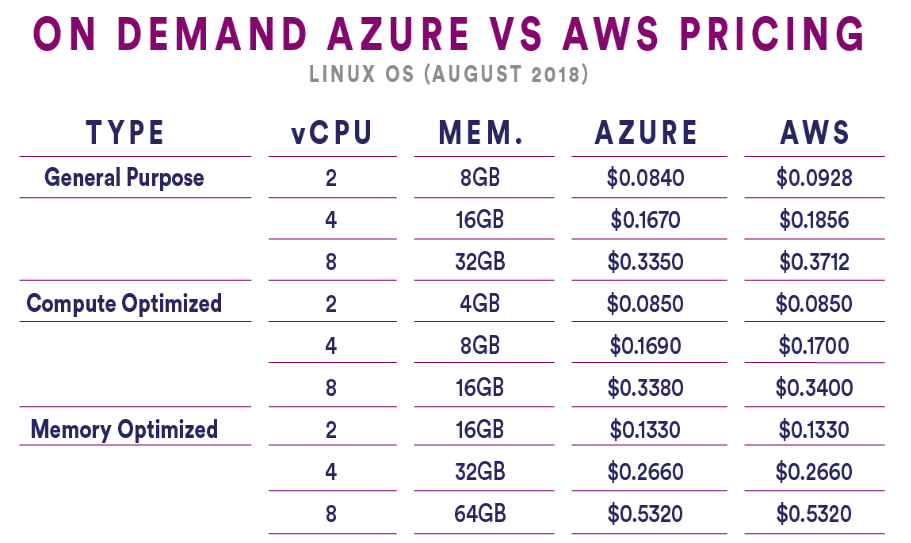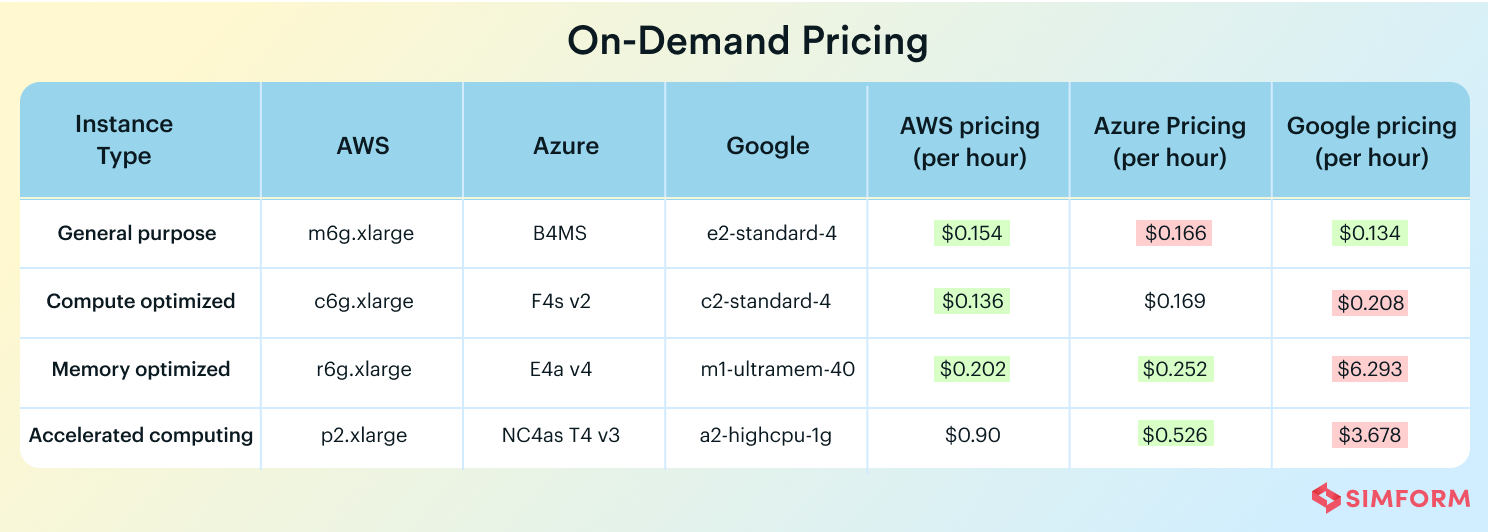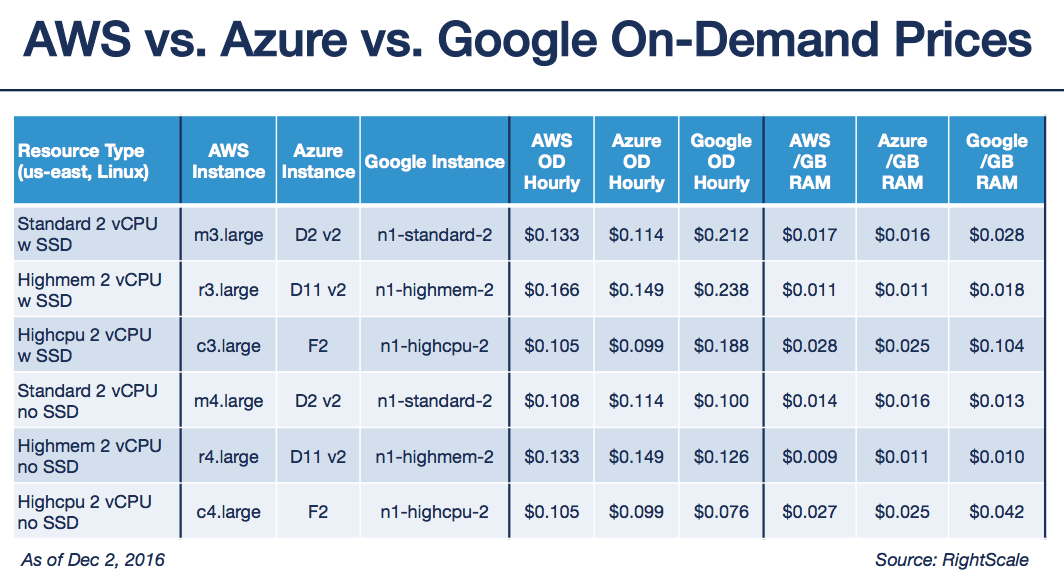Are you trying to decide between AWS and Azure for your cloud services? Understanding the pricing structures of these two giants is crucial for making an informed decision.
You might be wondering which platform offers the best value for your money or how to optimize costs for your specific needs. This comparison will give you a clear insight into the pricing models of AWS and Azure, helping you figure out which one aligns better with your budget and requirements.
Keep reading to discover the details that could save you money and ensure you’re getting the most out of your cloud investment.
Pricing Models
Pay-As-You-Go is very flexible. You pay only for what you use. No need for big upfront payments. This model suits small businesses well. Both AWS and Azure offer this option. It’s easy to start and stop services anytime. You can scale up or down based on needs. This helps save money.
Reserved Instances are like booking in advance. You commit for one or three years. This gives big discounts. AWS and Azure both have this option. It is good for steady workloads. You save money if you plan well. But, there is less flexibility than Pay-As-You-Go. Changes can be costly.
Spot Instances offer huge savings. These are spare capacities. Prices are lower than normal. AWS calls it Spot Instances. Azure calls it Spot VMs. Best for flexible tasks that can stop anytime. Prices can change often. Good for non-critical tasks. You might get interrupted, so plan carefully.

Compute Costs
AWS and Azure offer different pricing plans for virtual machines. AWS provides a pay-as-you-go model. This means you pay only for what you use. Azure also offers a similar pricing model. Both services have reserved instances for better savings. AWS and Azure have varied pricing based on machine type. The prices can change based on region and usage hours.
Containers are a popular choice for developers. AWS has ECS and EKS for managing containers. Azure provides AKS for container management. Pricing for both depends on resources used. AWS charges for each task and service. Azure charges based on the container instance. Both platforms offer flexible pricing options.
Serverless computing helps run code without managing servers. AWS Lambda charges based on request and execution time. Azure Functions have a similar pricing model. Both AWS and Azure offer a free tier. This allows users to try serverless for free. Costs increase with more requests and longer execution.
Storage Pricing
AWS offers Elastic Block Storage (EBS). Charges depend on use and type. Azure has Managed Disks. Costs also vary by type. Both offer standard and premium options. AWS prices start low but add up with use. Azure’s pricing is similar. Choosing the right type saves money. Comparing both is key to saving costs.
AWS uses Simple Storage Service (S3) for object storage. It has various classes. Prices change with data size and access. Azure’s Blob Storage works in similar ways. Pricing depends on access frequency and data amount. Both have cool and hot storage types. Picking the right class helps manage expenses.
Data transfer fees vary greatly. AWS charges for data moving out of the cloud. Azure does too. Transferring within the same zone is cheaper. Moving data across zones costs more. Both platforms offer free data transfer to a point. Understanding these costs avoids surprises.
Networking Charges
AWS and Azure have different bandwidth costs. AWS charges for data transfer out. Azure follows a similar pricing model. Both offer free inbound bandwidth. Outbound bandwidth costs vary. It depends on the region. Always check current prices.
Load balancing is crucial. AWS Elastic Load Balancing has a pay-as-you-go model. Azure Load Balancer also uses hourly pricing. Both offer basic and standard tiers. Costs differ based on usage. Selecting right tier saves money.
VPN charges differ. AWS offers VPN at hourly rates. Azure VPN Gateway uses a monthly plan. Both provide secure connections. Cost varies by gateway type. Choosing wisely can reduce expenses.
Database Pricing
AWS and Azure offer managed database services. These services save time. AWS RDS and Azure SQL Database are their main offerings. They support many database types. Users do not need to manage servers. Both provide high availability and security. Costs depend on usage and features.
Both AWS and Azure have multiple pricing tiers. These tiers fit different needs. AWS uses a pay-as-you-go model. Azure offers reserved and on-demand pricing. Costs vary with storage and compute power. Choose a plan that fits your budget.
Backups are crucial for data safety. AWS and Azure charge for backup storage. AWS charges per GB for backups. Azure also charges for storage, but rates differ. Keeping data safe is important. Compare costs before choosing a provider.
Security And Compliance Expenses
AWS and Azure both offer encryption services. AWS has a pay-as-you-go pricing model. You pay based on usage. Azure also charges for encryption. They offer different encryption types. These can affect costs. Choose the right one for your needs. Both platforms ensure data safety. But the costs can vary.
Managing identities is crucial. AWS offers Identity and Access Management (IAM). It is free for basic usage. Azure Active Directory provides identity services. Some features are free. Advanced features come at a cost. Evaluate your needs for cost-effective decisions.
Compliance is important for businesses. AWS and Azure offer compliance certifications. AWS covers many standards. Azure also supports various regulations. Certification can have associated costs. These expenses ensure your business remains compliant. Choose based on your industry needs.
Cost Management Tools
AWS and Azure offer various cost management tools to help businesses budget effectively. Comparing their pricing reveals differences in services and features. Understanding these can guide better financial planning.
Budgeting Features
Both AWS and Azure have strong budgeting tools. AWS offers Budgets to help set spending limits. Azure has Cost Management to track and manage budgets. These tools send alerts when spending gets high. This helps avoid surprise bills. Easy to set up and use.
Cost Tracking
Tracking costs is important. AWS uses Cost Explorer to show spending trends. Azure uses Cost Analysis for detailed spending reports. Both help understand where money goes. These tools provide visual charts. Easy to read and understand. Users can find wasteful spending quickly.
Optimization Strategies
Optimizing spending saves money. AWS has Trusted Advisor for this. Azure offers Advisor to improve efficiency. Both tools suggest ways to cut costs. Users can adjust resources based on these tips. Using less saves money. These strategies help manage cloud expenses better.

Discounts And Offers
Comparing AWS and Azure pricing reveals various discounts and offers tailored to diverse business needs. Both platforms provide cost-effective solutions, helping businesses optimize their budgets. Understanding these pricing structures can guide companies in choosing the right cloud service for their operations.
Enterprise Agreements
Enterprise Agreements give big discounts. Companies pay less for more. AWS and Azure both have these deals. AWS calls theirs the Enterprise Discount Program. Azure names it Enterprise Agreement. These deals help companies save money. They commit to using the services. The more they use, the more they save. It’s a win-win for both sides. Companies get better prices. AWS and Azure get loyal customers.
Free Tier Options
Both AWS and Azure have free tiers. Free tiers let users try services. AWS offers 12 months of free use. Azure gives a 30-day free trial. Users can test many features. They learn what works best for them. Free tiers help users decide. They show what the platform offers. Free tiers are great for beginners. Start small and explore more later.
Promotional Offers
Promotional offers change often. AWS and Azure both give these offers. They provide extra savings. Users should check the websites. Offers can be time-limited. Some offers target new users. Others are for special services. Keeping an eye on offers helps. Users can save more money. Always look for the best deal.
Regional Pricing Variations
AWS and Azure have different prices in different places. Prices can change a lot. Some regions have lower prices. Others may be more expensive. This happens because of local factors.
In many areas, local taxes affect the cost of cloud services. AWS and Azure may have extra fees. These fees depend on local laws. Different countries have different rules. This makes prices vary.
The value of money changes. This is called currency exchange. AWS and Azure prices can go up or down. The change depends on the local currency value. This can make cloud services more costly or cheaper.

Frequently Asked Questions
How Do Aws And Azure Pricing Models Differ?
AWS and Azure offer different pricing models tailored to varied needs. AWS uses a pay-as-you-go model, while Azure provides subscription-based options. Additionally, both platforms offer discounts for reserved instances and long-term commitments. Understanding these models can help businesses optimize costs effectively.
Which Is Cheaper: Aws Or Azure?
The cost difference between AWS and Azure depends on specific services and usage. Generally, AWS may be cheaper for compute services, while Azure often provides cost-effective storage solutions. It’s essential to analyze your workload needs to determine which platform offers better value for your requirements.
Do Aws And Azure Have Free Tiers?
Yes, both AWS and Azure offer free tiers. AWS provides a 12-month free tier with limited services, while Azure offers a free account with certain services available for 12 months and others always free. Exploring these free tiers can help you test services without upfront costs.
Can Pricing Impact Cloud Service Choice?
Absolutely, pricing can significantly impact choosing between AWS and Azure. Businesses often evaluate pricing to ensure budget alignment. However, other factors like service quality, scalability, and support are also critical considerations alongside pricing when selecting a cloud provider.
Conclusion
Choosing between AWS and Azure depends on your business needs. Both platforms offer competitive pricing and vast features. Consider your budget and specific requirements. AWS provides flexible pricing options. Azure offers strong integration with Microsoft services. Evaluate your workload demands and projected growth.
Cost management tools can help control expenses. Test both services if possible. This helps determine the best fit for you. Make informed decisions for successful cloud adoption. Understanding each platform’s pricing will guide your choice. Always align with your strategic objectives.
Choose wisely to optimize resources and achieve goals efficiently.
Read More:
- Network Automation Tools ROI: Boosting Efficiency & Savings
- Noise‑Cancelling Earbuds Battery Life: Maximize Your Usage
- Ci/Cd Pipeline Tools Comparison: Boost Your DevOps Efficiency
- Serverless Vs Containerized Workloads: A Comparative Guide
- Vr Content Creation Tools 2025: Revolutionize Your Creations
- Best Gaming PC Build under $1500: Ultimate Performance
- Best Cross‑Platform Mobile Frameworks 2025: Top Picks
- Javascript Frameworks Benchmark 2025: Speed & Performance

